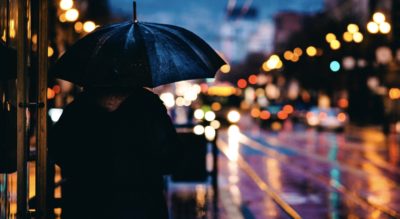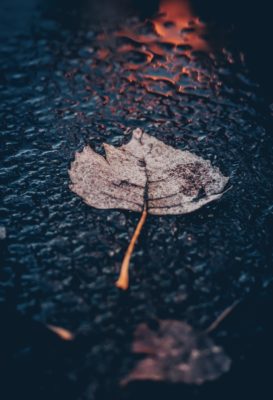5 Suggestions for Capturing Beautiful Landscapes in Bad Weather
October 29, 2018
There are numerous aspects of landscape photography that surprise and overwhelm photographers because each experience will have been different from the rest. One misconception, however, is that you need clear skies and warm breezes to take a good landscape photograph. This is far from the truth because there isn’t such a thing as perfect or bad weather to take landscape pictures. Here are 5 suggestions for capturing beautiful landscapes in bad weather.
Take Safety Precautions
Even though landscape photos in any kind of weather may turn out well, safety is still important and is an important aspect to consider. If its raining and cold, make sure to put on proper waterproof clothing and carry essentials like a safety kit and a way to communicate such as a mobile phone. Also, if the area is prone to sun and heat, then carry sunscreen and an appropriate amount of water and supplies. Look at the forecast for the day before leaving, and check whether the area has a safe spot where you can rest in between if needed.
It’s also important that you carry a good camera bag that’s waterproof and has plenty of space to hold your gear. If it is raining, it will probably get wet and could soak through damaging your equipment. Make sure you also pack a microfibre cloth to clean the lens because it’s likely to get dusty or wet if it’s raining outdoors.
When It’s Windy
If the wind makes it difficult to take a good shot, use it to your advantage by taking photos of landscapes that are impacted by medium to high wind flow. Windmills that gracefully turn are just one example of a good scene that can be captured well on a windy day. You may need to use a faster shutter as well to avoid any camera shake, otherwise the images will turn our blurry. If you’d prefer a completely natural landscape, a photo of flowers swaying in a garden, or light crops moving side to side will be a better choice. Yes, you’ll have more focused and detailed pictures but they’ll be filled with spectacular energy. If your images have an intentional sense of motion in them, such as a river flowing, clouds moving, the windmill’s blades turning and the rest of the image is perfectly still, this will take your photograph to the next level of interest and drama.
Even the sight of trees shaking is good enough to capture on a windy day because it gives a creative perspective. While taking pictures in these settings, shutter speed is a huge priority that must be considered. You’ll need high shutter speed if you intend to capture leaves being blown in clusters, and slower shutter speeds if your target is the sky with its flowing clouds.
Post-Rain Photography
It’s sad to admit that it isn’t much you can capture through the lens when it’s raining. That’s because you’ll need to be properly covered so you’ll be taking pictures from indoors or undercover. But you can leverage the appearance of raindrops and puddles after rainfall when taking pictures. These offer you a wide range of photographic opportunities and mediums that you can focus on, especially if you can get some beautiful reflections.
Raindrops are a complex feature to take pictures of because of their size and their unpredictability. But that’s also what makes them such a good choice to photograph. Raindrops are present on leaves and spider webs, and plenty of other surfaces; each presents a new challenge that will be interesting to take up. You may need to consider also a close up image using a macro lens. Not all landscape images need to be taken with a wide angle lens!
On the other hand, there are puddles that serve as a good reflective perspective. Look out for something of interest such as a light pole, a building or interesting tree that is in the reflection and maybe get down low with your tripod.
For Foggy Days
Fog and mist are considered to be beneficial for photography since they can be considered as a natural filter that softens the colours and downplays saturations, which enhances the value of tones in the scene. In such settings, post-production filters like black and white ones will allow you to produce an image that is full of emotion. Even if you want to keep the scene’s distinct colours, you’ll get subtle hues that stand out from the rest of your fine art photography. In particular, fog that draws attention to the surrounding landscape such as trees, fields, mountains etc is a great way to highlight these things.
Fog is always moving so you know that your images will be unique and interesting. Just be careful not to overexpose your images with all of the whiteness in the image from the fog. Also, if you are near the fog your lens may develop moisture on the front of the glass so be careful this doesn’t affect your images.
Use a Steady Tripod
Lastly, it’s really important that you take gear that will help you with landscape photography in bad weather. A tripod is essential at the best of times for landscape photography, however during bad weather even more important because a shaky camera is inevitable in bad weather since winds can buffer the tripod and camera, creating micro movements. Also, you’re likely to come across uneven surfaces at your chosen location so you’ll need a steady way to hold your camera. You may even need to consider using an anchor to help hold your tripod down for extra support, but this can also be an issue if the anchor is moving around with wind.
There are times when the weather is just too bad to get out there and shoot. Lets face it, no one wants to be standing outside in the freezing cold with rain blasting at you. When I have planned to shoot in a location and the weather turns bad, I make sure I stay warm and use the time to edit photos inside! Or keep an eye out in the car for the rain to stop and grab the photo before it starts raining again!
Often when there is rain overnight, it can result in amazing sunrises. For example, my photograph Sunrise at 12 Apostles was taken about 30 minutes after heavy rain. The resulting rain clouds are in the shot and help to provide texture and drama to the scene as the sun was rising.
Make sure you are following me on social media! Check out my Facebook account or Instagram account.
To purchase my Landscape Photographs for your office or home, please visit my Gallery.
